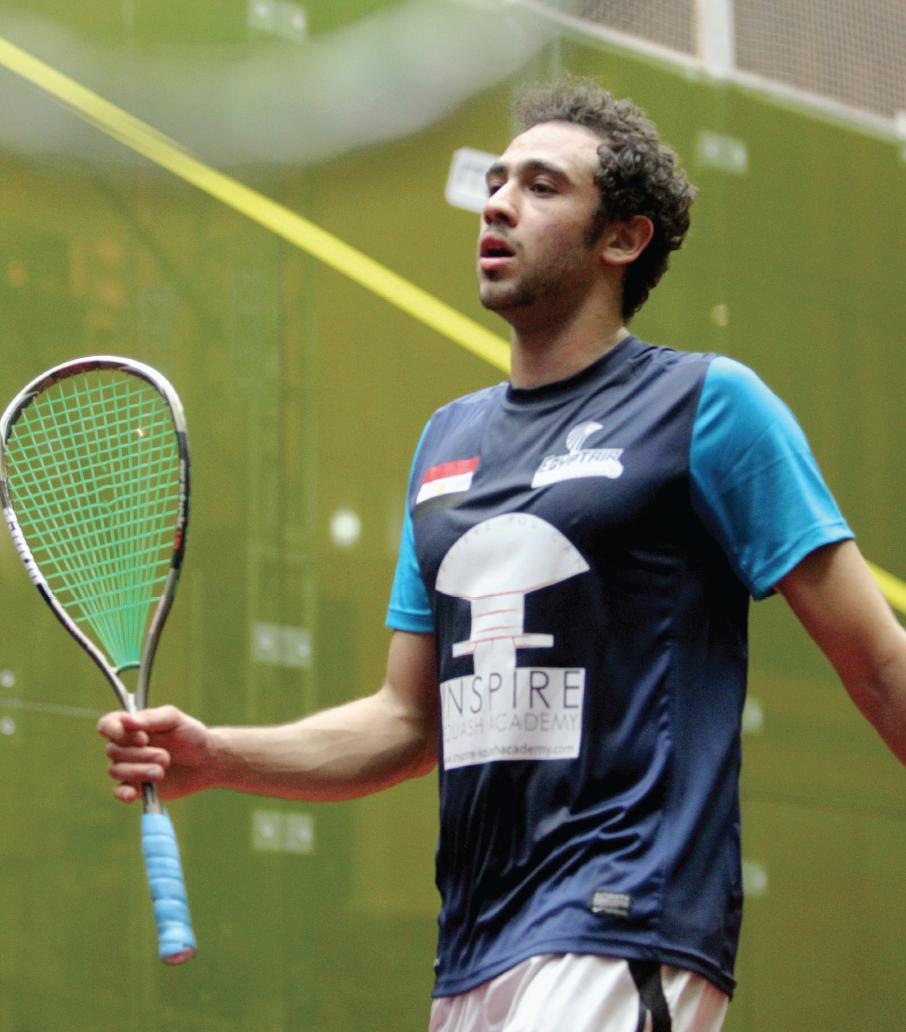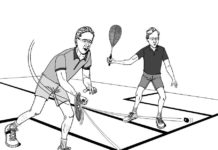By Barry Faguy, WSF Referees and Rules Committee
HEY REF!: Often, when there is no real interference, my opponent asks for a let, claiming ‘safety’. I figure if I’m not in the way, then he should just play the darn ball. What’s the rule on that?
The rules contain a concept known as ‘reasonable fear of injury’ (RFOI) that allows for a let in such circumstances (assuming the ball was playable). Normally, as you’re suggesting, when there is no interference, then a No Let would be called for. However, given the inherent dangers of Squash, with fast-moving players swinging long rackets and a speeding ball, a lot of damage can happen (and has happened). If the ball is 8 inches from your face, you’re not really in the way—but do you really want your opponent it hit it? Now, in order to avoid the potential abuse of this RFOI principle and have players claim a let when they simply want a break or want to avoid having to play a tough shot—the rules set a limit, referred to as “well clear”. This means that if the Referee considers that there is neither interference nor RFOI, then a No Let is due. Finally, it’s worth noting that this RFOI concept generally applies for interference to the ‘swing’ and to the ‘path of the ball’.
HEY REF! Sometimes when I’m reffing, I feel that I should jump in and stop play before one of the players nails the other with a racket or ball with their wild playing style. Some players are just crazy and seem to have lost track of the fact that there’s someone else in there with them. Do I have to wait till one of them appeals — or am I allowed to intervene?
You certainly may jump in there—and should—typically with lower-level players. It is unusual, but doing this will serve to demonstrate to the players that something is wrong. It may just be an epiphany for them in terms of safe play—and a light bulb might go on in their head. Somewhere along the way in everyone’s playing career, we need to develop a consciousness about risks to others. We cannot carry on like a bull in a china shop. To enforce this point, a typical progression would see you starting with a casual warning for dangerous play—then if it happens again, moving on to a formal Conduct Warning or Conduct Stroke. That usually gets their attention.

HEY REF! What happens if my opponent serves the ball, not having noticed that I was not ready—and the ball goes out?
The ball is out! Hand out! The fact that you were not ready is immaterial since nothing affected the flight of the ball. Of course, if during the service action, she reflexively altered the swing because she noticed you weren’t ready, then that would qualify for a let on the basis of ‘distraction’. Another reason for allowing a let here is that sometimes the Marker called ‘Stop’ during that swing action—and that could have thrown the swing off. However, once the ball has left the racket, remember the old saying: “The ball has no ears!”
HEY REF! What happens if the ball I’d just hit was coming off the front wall and hit me—but it’s because I couldn’t clear because my opponent was right behind me and trapped me there?
In these situations where the non-striker (you, in this case) is hit by the ball, there is no actual appeal and the Referee must make a decision in all cases—including cases where there is interference (like this one). So, if indeed your description is accurate, and you would have been gone had it not been for the fact that you were trapped in place—then the rules call for a let. However, if even without being trapped you would not have been clear by the time your opponent was there to hit it—then you would have been toast.
HEY REF! At the business end of a heated match, my opponent showed the Referee a very frayed string and was allowed off to change the racket—but while there, took the time to towel off and have a drink of water. I asked and was told I wasn’t allowed to leave. Is that fair?
The rules state that any change of equipment must be done as quickly as possible—which obviously was not what happened here. As well, it’s questionable to consider a frayed string as being “material deterioration”—and thus qualifying for a break. The rule dealing with ‘change of equipment’ has as its basic premise to ensure that one player doesn’t get “an unfair rest interval”—but other than that, many interpretations are up for grabs. Some examples we’ve seen that might not technically break the rules but yet might not seem kosher, are instances of where a coach or friend has, between rallies, thrown in a new racket, or a wrist band, or eye guards, or even, are you ready for this—a chunk of banana!
HEY REF! I was playing someone in a tournament and in the heat of the battle, her watch fell to the floor. However, no one noticed till the rally was over—a rally that I lost. I mentioned that I thought I should be awarded the rally, but the ref said no. What’s the deal?
The ref got it right. Had the watch been noticed in the middle of the rally, the rally should have been stopped. Then, its origin and cause need to be determined; if it fell without any collision with the opponent (you)—then you should have been awarded a Stroke; if a collision with the opponent was involved—then a let is played. If an object goes unnoticed, and had no effect on the rally—then the outcome of the rally stands. It’s only fair.





